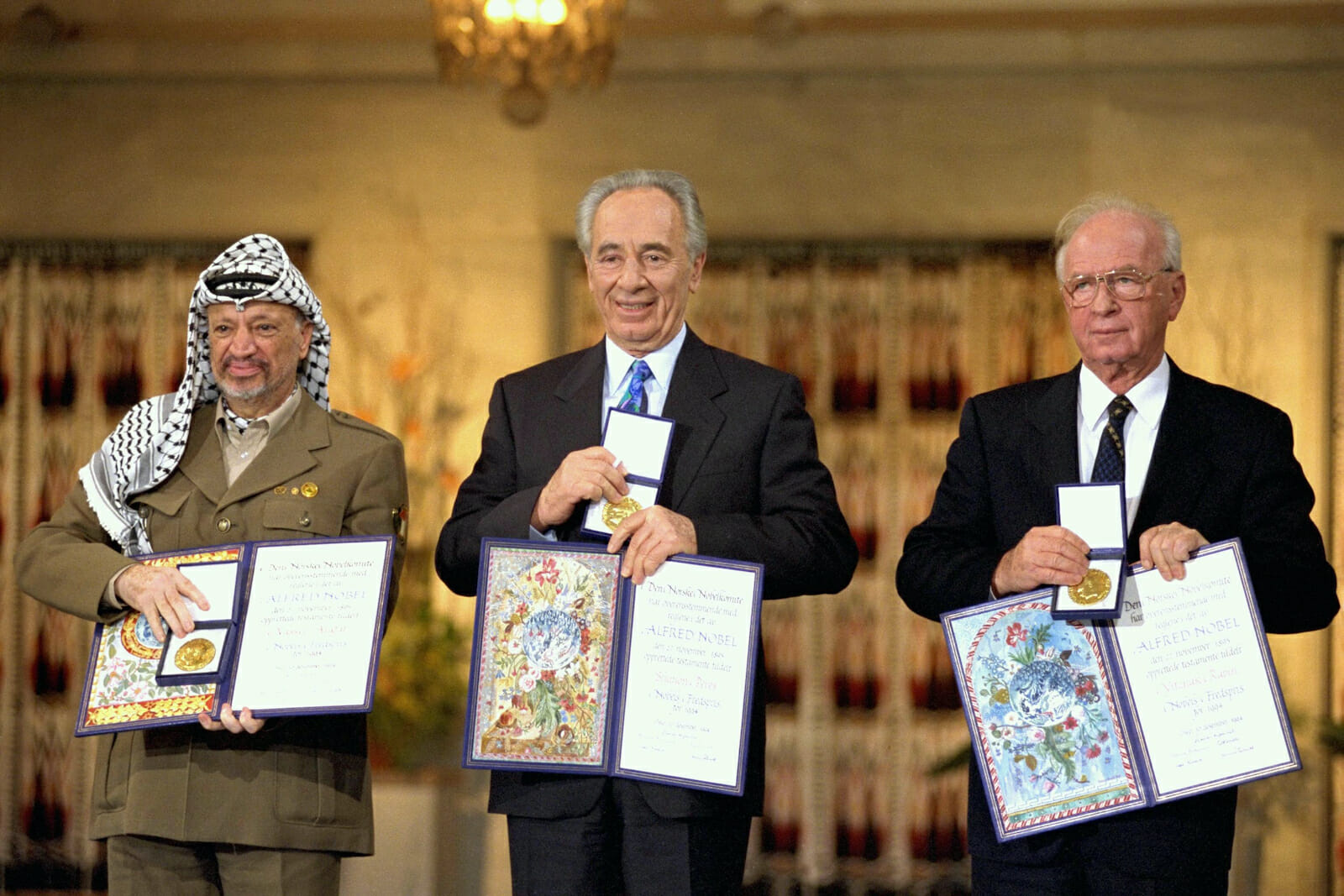
Peace is Possible Just Look at the Good Friday Agreement
Peace between Israel and Palestine. Hard to imagine. Recent Israeli attacks on the Al-Aqsa Mosque followed by the retaliation by Hamas are another reminder of how difficult achieving peace will be. Peace can happen when leaders are committed to peace, as shown in Northern Ireland.
It may come as a surprise, but Israel and Palestine once came achingly close to an agreement. In 1993, secret negotiations between Israeli Prime Minister Yitzhak Rabin and Yasser Arafat, the former head of the Palestine Liberation Organization, delivered the Oslo Accords. It was audacious. Together, Rabin and Arafat won the Nobel Peace Prize for their efforts.
Under the accords, Rabin acknowledged the PLO. The PLO and Arafat agreed to recognise Israel’s legitimacy and that “Israel would withdraw from Gaza and seven cities of the West Bank and allow limited self-rule and the creation of an elected parliament.” Regrettably, this incredible moment in history never came to fruition. Rabin was assassinated by an Israeli who opposed the peace agreement. Upon hearing the news, Arafat wept. The peace process disintegrated, and the Palestinian-Israeli conflict persists.
Journalists in Israel noted that the Good Friday Agreement was a one-of-a-kind solution to a one-of-a-kind problem. For some, peace for Israel and Palestine is impossible; Israel prefers the status quo. Rather than a defeatist, doom-laden stance, I prefer an optimistic outlook. Even when negotiations fail, they can ultimately lead to a rapprochement where peace prevails. The Good Friday Agreement can attest to that.
A comparison between British-Irish relations and Israel-Palestinian relations may seem absurd. However, the similarities, like their settler-colonialist elements, enable us to see that a pathway to peace in what appears to be a desperate and intractable political situation is possible.
The collapse of the Sunningdale Agreement in 1973 (a power-sharing agreement establishing a cross-border Council of Ireland) meant another 25 years before successful negotiations brought peace to Northern Ireland. Throughout the Troubles, both the nationalist IRA and the unionist Ulster Volunteer Force (UVF) used terrorist attacks to further their causes. In 1971, the UVF killed 15 civilians in a bombing in Belfast. In November 1974, IRA bombings in Birmingham killed 21 civilians. Peace looked unobtainable.
Former IRA members looked to the Oslo Accords process as an inspiration, with a nationalist spokesperson saying that “if our allies in the PLO could forgo the armed struggle and sign an agreement with the Israelis…then we felt that maybe we too could sign agreements with the British and the Unionists.” Thirty years of attempted ceasefires, many deaths, and failed negotiations should conclude the impossibility of peace. But this was not the case.
In 1998, 700 days of formal negotiations running parallel to back-channel talks resulted in the British and Irish parliaments and eight minor groups signing the Good Friday Agreement. On May 22nd, 1998, the Good Friday Agreement referendum results confirmed acceptance by the people of Northern Ireland (71.1% yes) and the Republic (84.4% yes).
An end to the Troubles was in sight. Success came down to the commitment of leaders of all parties’ determination to find peace. Secret negotiations between the IRA, Britain, the Social Democratic and Labor Party, and the UVF were crucial. Back-channel talks between the Northern Ireland unionist John Hume, and Gerry Adams, and Martin McGuiness (the leaders of Sinn Féin, the political wing of the IRA) facilitated their willingness to come to the table. A legitimate government negotiating with terrorists angered many, yet it was necessary.
The involvement of all parties meant all opinions were heard and understood. Talks were ultimately successful because of the commitment from crucial individuals who persuaded and cajoled. Bill Clinton oversaw talks and brought opposing parties together whilst Mo Mowlam (Secretary of State for Northern Ireland) convinced a doubtful nationalist community to come to the negotiating table. She recognised the value of including women in the process and the need to meet imprisoned paramilitaries. Clinton’s extraordinary personality and Mowlam’s passion, honesty, humanity, and natural ability to connect with people played crucial roles in shifting the atmosphere that led to success.
Even when facing impossible political stalemates like during the Troubles, peace is possible. We look at the extraordinary leadership shown by the likes of Hume, Mowlam, Clinton, Rabin, and Arafat. We need to search for new leaders who can repeat this remarkable outcome in a new context.
The Good Friday Agreement exemplifies “how a decades-long sectarian conflict can end.” Ultimately, the Good Friday Agreement proves that if “people want peace, quietness, prosperity, and a good life as well as their national rights, equality and justice,” then it is possible to achieve it.
When looking towards the Middle East, the same commitment is needed; the Good Friday Agreement is a reminder that even the most stubborn political problems can be solved. Who knows, maybe Biden will surprise us.

